This post may contain affiliate links. Please read my privacy policy.
Easy Kimchi Jjigae is one of the most popular Korean kimchi stew recipes made with a few essential ingredients. It's hot, spicy, flavorful, and absolutely mouthwatering when serve with a bowl of steamed rice.
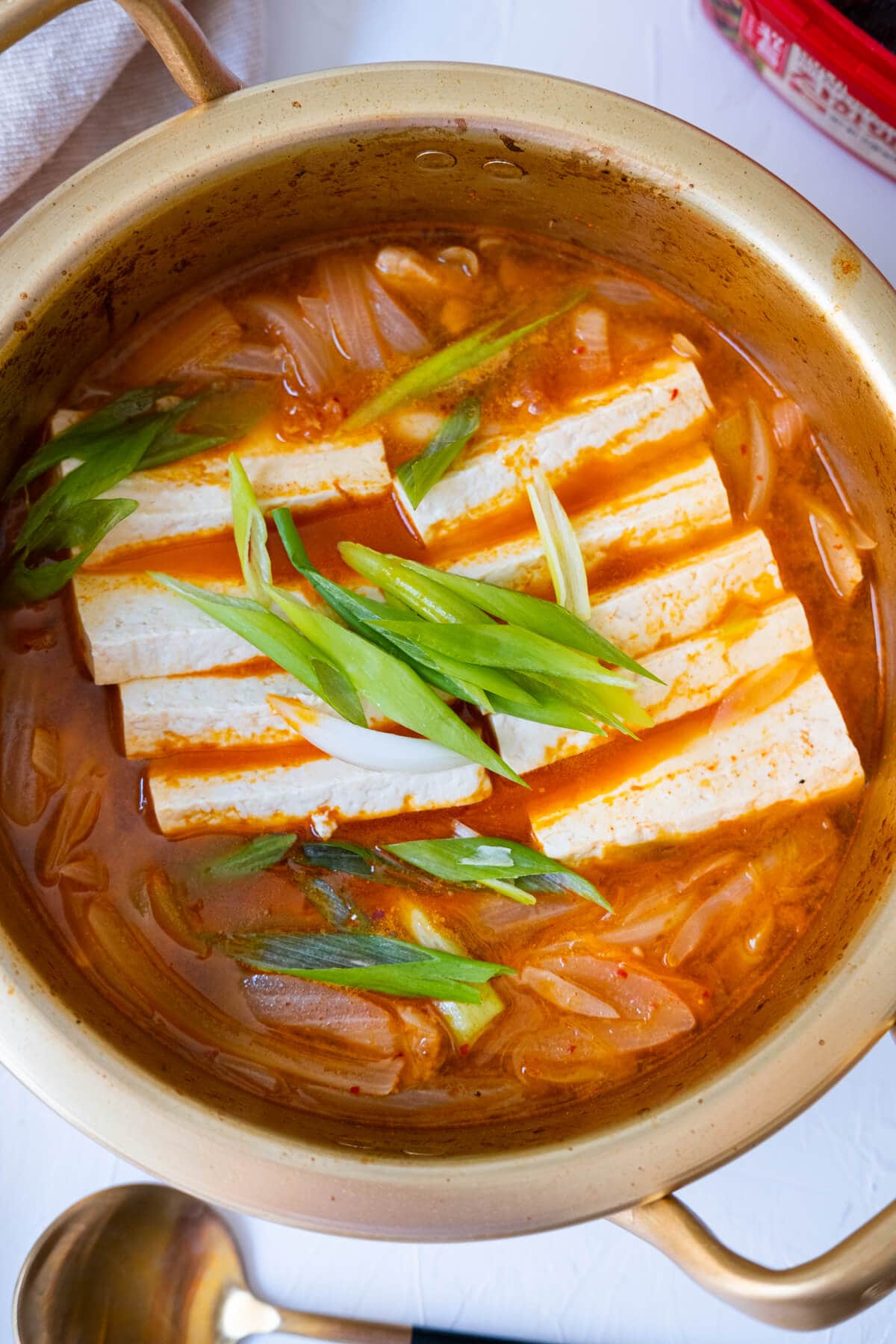
Easy Kimchi Jjigae Recipe
Easy kimchi jjigae is a famous Korean kimchi stew made from kimchi, pork belly slices, and firm tofu with a spicy kick from Gochugaru powder (Korean hot pepper flakes) and Gochujang (Korean red chili paste).
The stew is hot, spicy, and has an umami flavor from the homecooked anchovy kelp stock. It is best served with a bowl of hot steamed rice for lunch or dinner. It’s absolutely delicious and addictive.
Love Korean spicy dishes? This is the perfect recipe to start with.
For more kimchi recipes, check out my kimchi ramen and Kimchi Dumplings recipes!
Check out my Spicy Korean Chicken recipe for more delicious Korean recipes!
Why This Recipe Works
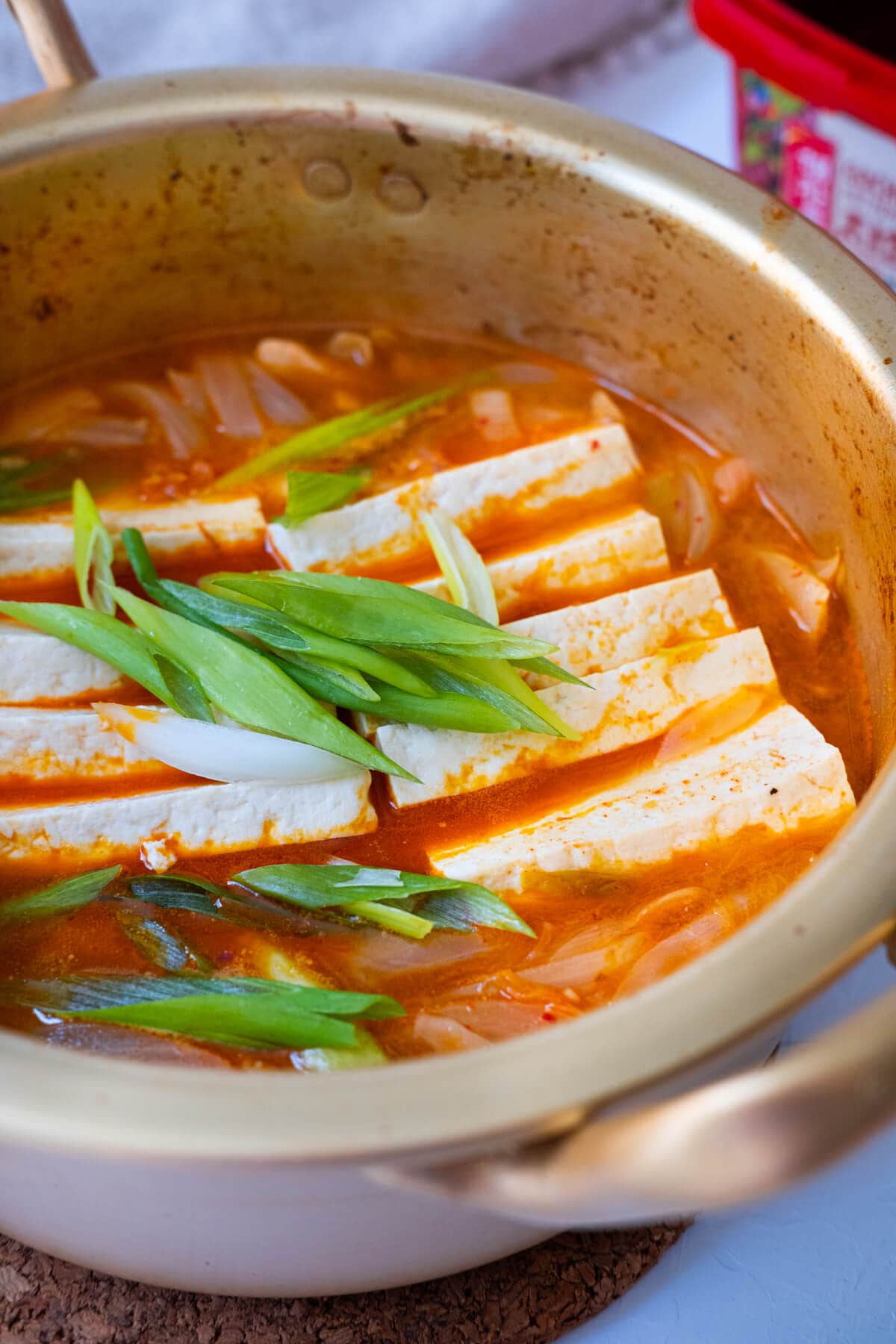
It’s one of the easiest kimchi stew recipes made with only a few essential Korean ingredients. It is perfect for weeknight dinners and also makes the best comfort food gloomy rainy days.
This recipe goes well with a variety of protiens, such as pork, beef, and seafood.
To make a less spicy Korean kimchi jjigae, you may always reduce the amount of Gochugaru and gochujang in the recipe.
Kimchi Jjigae Ingredients
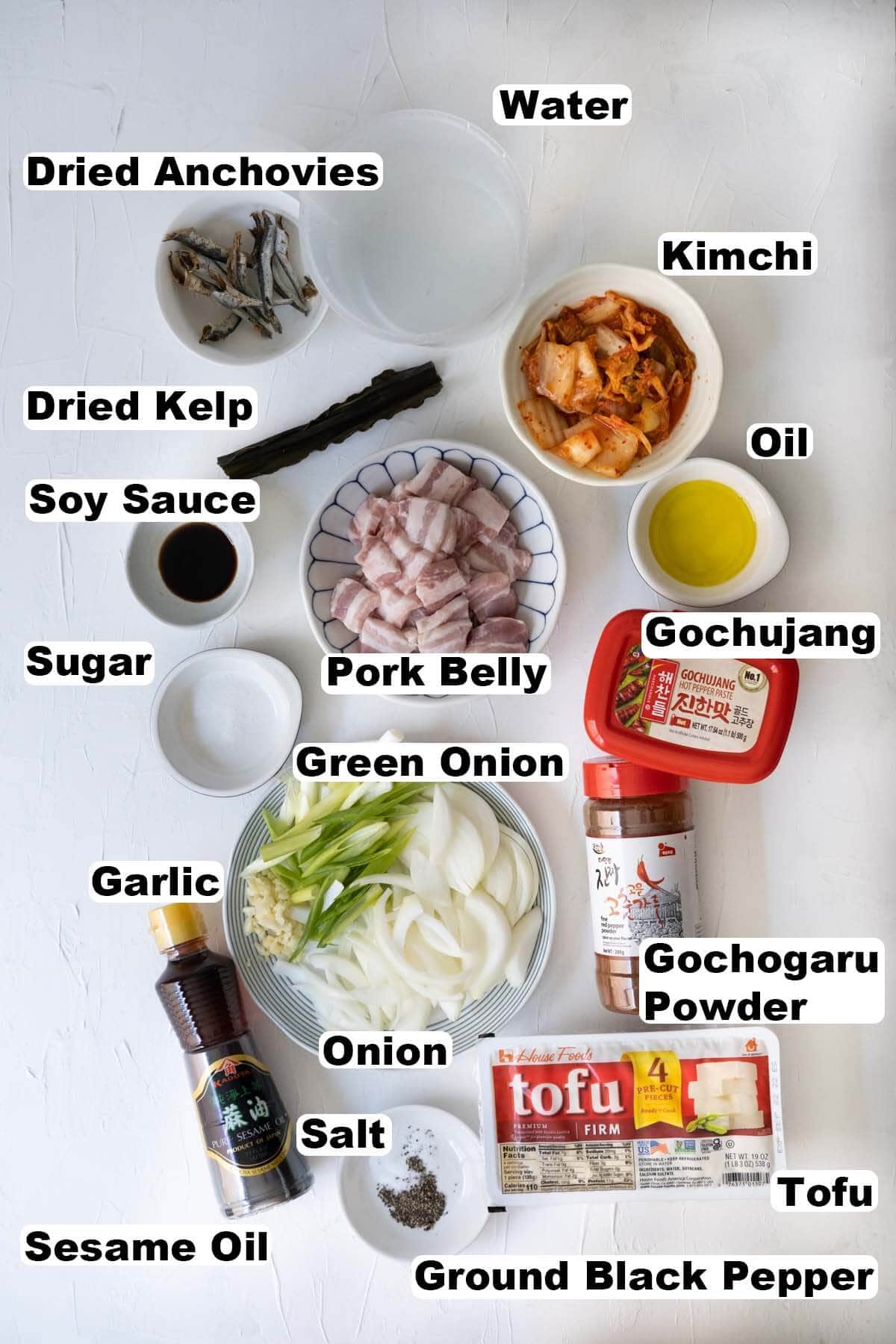
Start with homemade anchovy stock:
- Water
- Dried anchovies
- Dried kelp
Then you will add:
- Oil
- Yellow onion
- Garlic
- Kimchi and kimchi juice
- Pork belly
- Green onion
- Gochugaru powder (Korean chili powder)
- Gochujang (Korean red chili paste)
- Sesame oil
- Soy sauce
- Sugar
- Firm tofu
- Salt
- Ground black pepper
See the recipe card for full information on ingredients.
How To Make Kimchi Jjigae
This homemade easy kimchi jjigae is quick and effortless to prepare and the taste is impressive.
First, prepare anchovy kelp stock in a saucepan. Bring water to a boil, add anchovies and kelp, and cook for 15 minutes to bring out the flavor. Strain the soup into a bowl and discard the solids.
Next, heat a soup pot (or a Korean earthenware pot) with oil on medium-high heat. Saute onion and garlic until aromatic, then add kimchi, kimchi juice and pork belly slices. Stir-fry all the ingredients in the pot until the pork is cooked through.
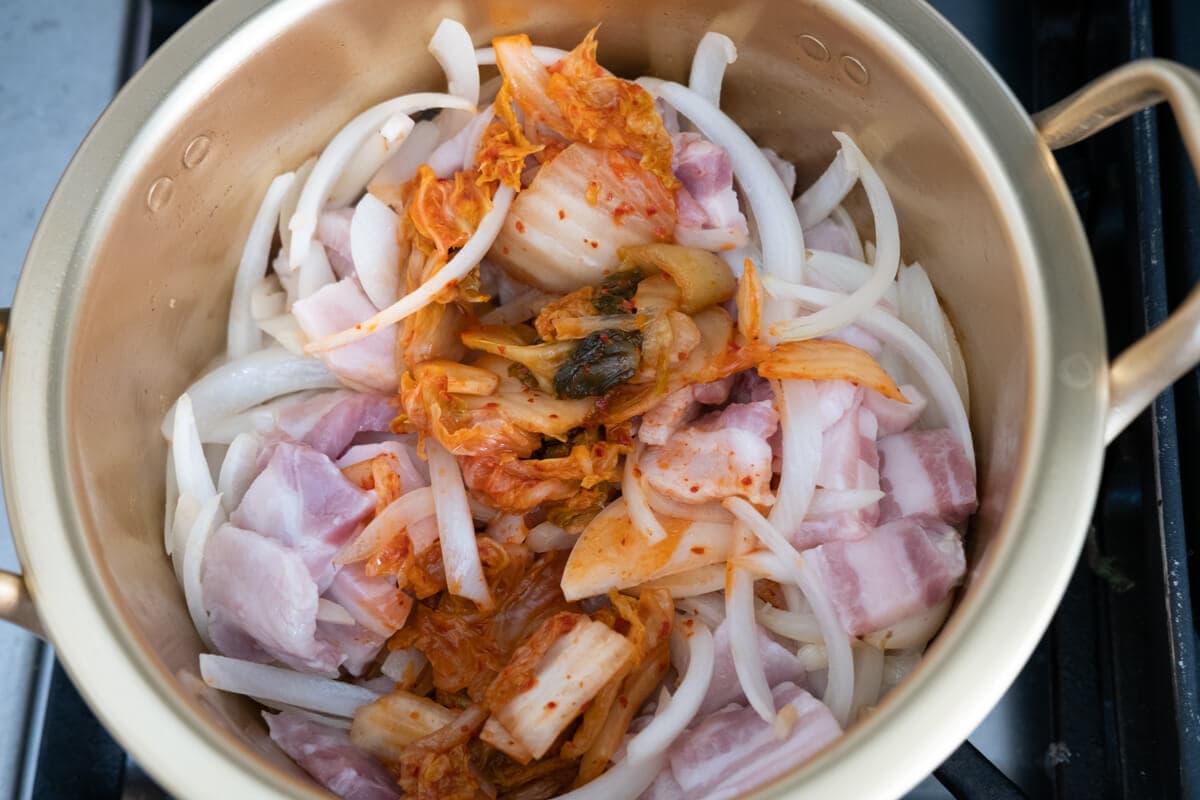
Meanwhile, prepare the kimchi jjigae sauce by combining green onion, gochugaru powder, gochujang, sesame oil, soy sauce, and sugar in a small bowl. Then add to the pot and stir well.
Finally, add the stock and bring it to a boil. Continue cooking the stew for 15 to 20 minutes then add tofu. Lower the heat to medium-low and simmer for 10 minutes until the tofu is soaked with all the flavors from the stew.
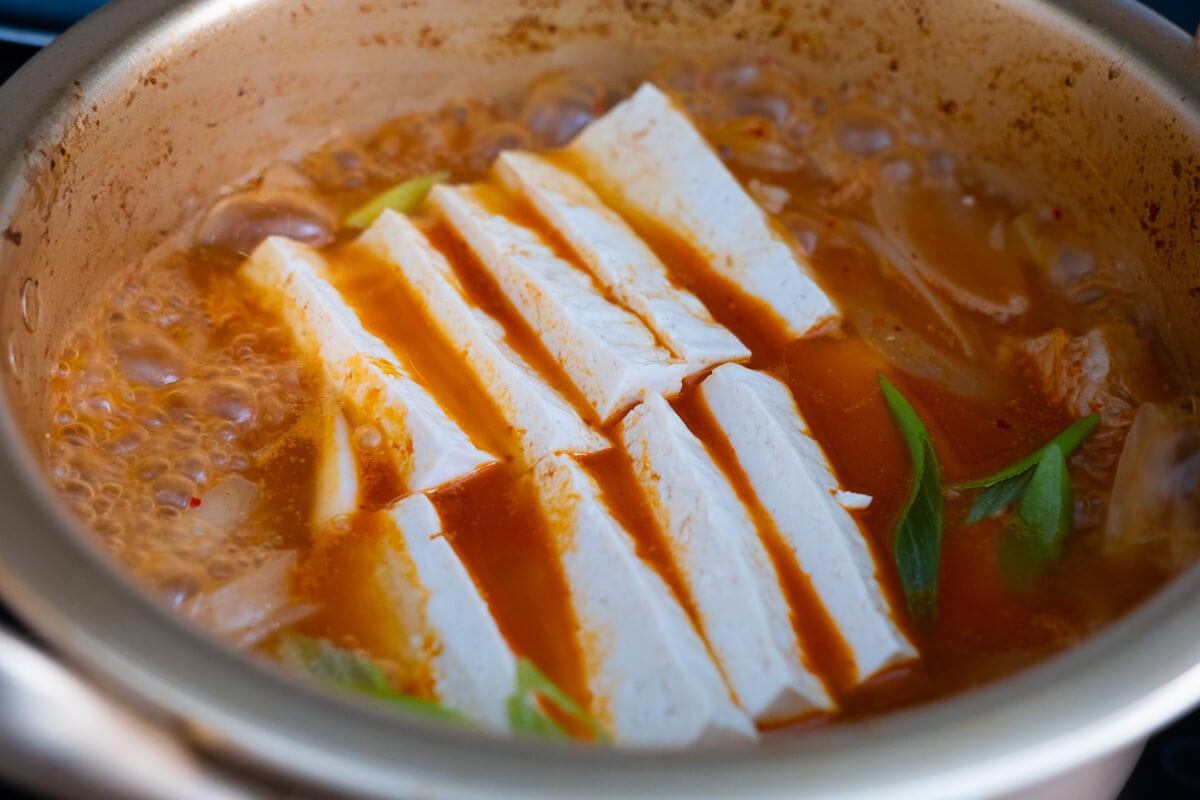
Turn off the heat and serve immediately with chopped green onions on top.
Cooking Tips
- Cook the kimchi stew with a homemade anchovy kelp stock if possible. However, you may also substitute water, store-bought chicken stock, or vegetable stock.
- Use aged, sour kimchi for the best taste.
- Cook the stew with an extra tablespoon of kimchi juice to jazz up the flavor.
Frequently Asked Questions
Yes, you may add mushrooms and more chopped onions to the soup instead of pork belly to the stew to make a vegetarian kimchi jjigae.
Yes, this easy kimchi jjigae recipe is healthy and nutritional. Since the stew is cooked with homemade anchovy stock, it contains less sodium than the store-bought ones.
If there is a concern about the fatty pork in the stew, you may substitute the pork belly with a lower fat meat, such as pork shoulder, beef, or seafood.
This recipe has 516 calories per serving.
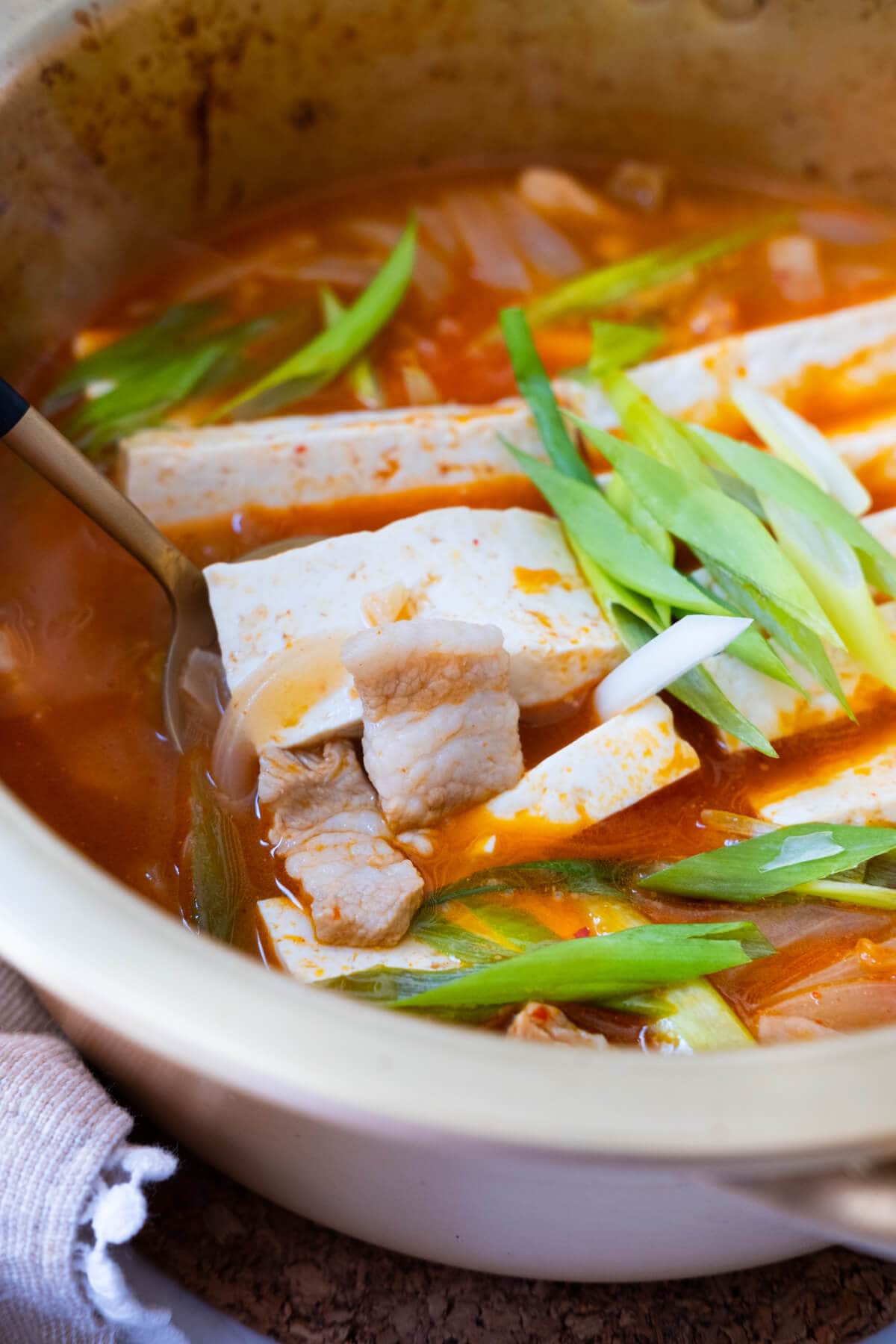
What To Serve With Kimchi Jjigae
For an easy and wholesome Korean meal, I recommend the following recipes:
I hope you enjoy this post as much as I do. If you try my recipe, please leave a comment and consider giving it a 5-star rating. For more easy and delicious recipes, explore my Recipe Index, and stay updated by subscribing to my newsletter and following me on Facebook, Pinterest, and Instagram for new updates.
Other Recipes You Might Like
- Soondubu (Korean Tofu Stew)
- Jjamppong (Korean Seafood Noodle Soup)
- Shrimp Sinigang
- Spicy Korean Chicken Wings

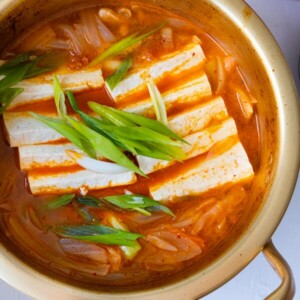
Easy Kimchi Jjigae
Ingredients
- 4 cups water
- 1 sheet dried kelp
- 8 dried anchovies
- 2 tablespoons oil
- 1 yellow onion, sliced
- 4 cloves garlic, minced
- 1 cup kimchi, chopped (more kimchi juice to taste)
- 1/2 lb pork belly, cut into bite size pieces
- 3 stalks green onion, sliced into 2-inch pieces
- 1 tablespoon gochugaru powder, Korean hot pepper flakes
- 1 tablespoon gochujang, Korean red chili paste
- 1 tablespoon sesame oil
- 1 teaspoon soy sauce
- 1/2 teaspoon sugar
- 1 pack firm tofu
- Salt, to taste
- Ground black pepper, to taste
Instructions
- Prepare the anchovy kelp stock by first removing the heads and guts from the dried anchovies. Bring water to a boil in a saucepan, then add the dried anchovies and kelp. Cover and simmer over medium heat for 15 minutes. Turn off the heat, strain the broth into a bowl, and discard the solids. Set the stock aside.
- Heat a soup pot (or a Korean earthenware pot) with oil over medium-high heat. Add the onion and garlic and stir-fry for 2 minutes, until aromatic. Add the kimchi, 2 tablespoons of kimchi juice, and pork belly. Stir constantly for 5 minutes, until the meat is almost cooked through.
- In a small bowl, combine the green onion, gochugaru powder, gochujang, sesame oil, soy sauce, and sugar. Mix well. Stir this mixture into the pot. Add the anchovy kelp stock and bring the soup to a boil. Then, lower the heat to medium-low and simmer for 10 to 15 minutes.
- Cut the tofu in half lengthwise and slice it into 1-inch (2.5 cm) pieces. Add the tofu to the pot and simmer for 10 minutes, until the tofu is infused with the flavors of the stew and the pork is cooked through.
- Serve immediately, garnished with chopped green onion on top.
Video
Notes
- Cook the kimchi stew with a homemade anchovy kelp stock if possible. However, you may also substitute with water, store-bought chicken stock, or vegetable broth.
- Use aged, sour kimchi for the best taste.
- Cook the stew with an extra tablespoon of kimchi juice to jazz up the flavor.
Nutrition
Nutrition information is automatically calculated, so should only be used as an approximation.
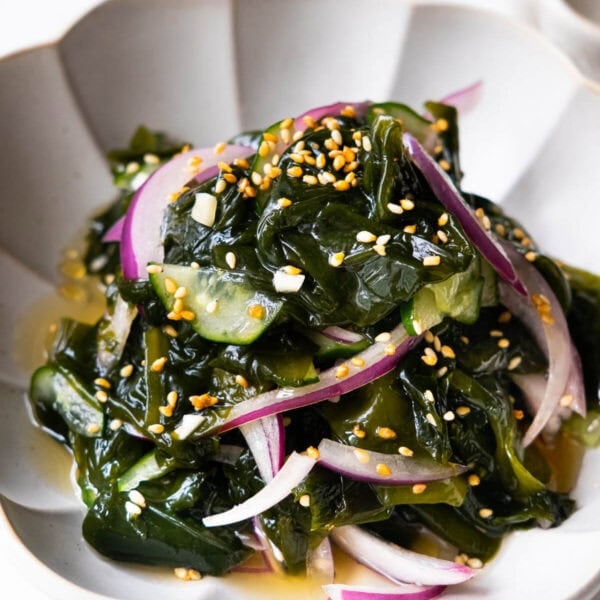
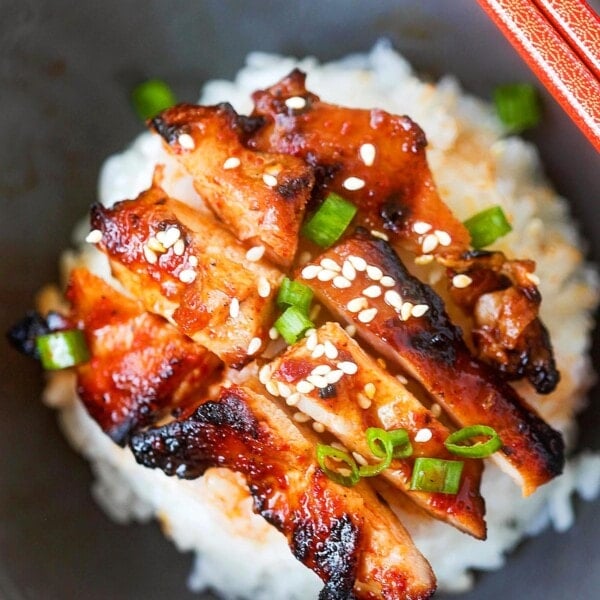
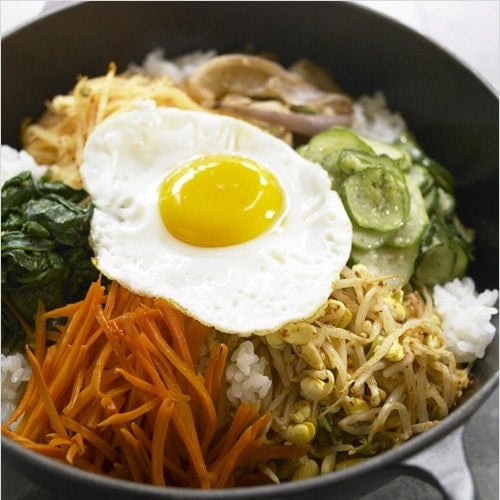






Can this be frozen? My husband loves Kimchi Jjigae. I was wondering if I made a double batch, if I could freeze the 2d portion for later. Thank you.
Yes, it freezes well! Let it cool, then store in airtight containers for up to 3 months. Reheat on the stove and add a bit of water if it’s too thick. Tofu can become slightly spongy after freezing, so if that bothers you, leave it out before freezing and add fresh tofu when reheating.
Delicious and nice